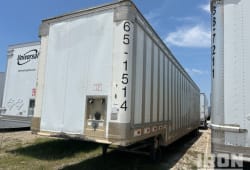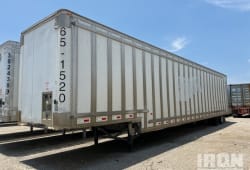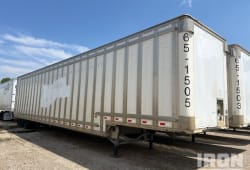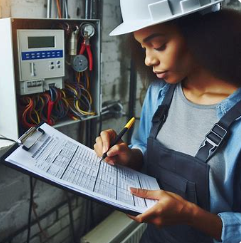Leading 25 Sustainable Building Materials
11 Min read
)
May 3, 2024
Sustainable building materials are those that are environmentally responsible because they reduce the depletion of natural resources, minimize environmental impact, and can be reused or recycled. Examples include bamboo, recycled steel, and cork, among others. These materials help in constructing buildings that are more energy-efficient and have a lower carbon footprint.
Bamboo
:format(webp)) A highly renewable material derived from a fast-growing grass, capable of reaching maturity in just 3 to 5 years, making it a sustainable resource.
A highly renewable material derived from a fast-growing grass, capable of reaching maturity in just 3 to 5 years, making it a sustainable resource.
Benefit: Known for its exceptional strength and versatility, bamboo finds applications in various structural uses such as flooring, paneling, and furniture. Additionally, bamboo has a lower environmental impact compared to traditional hardwoods, making it a preferred choice for eco-conscious construction projects.
Recycled Steel
:format(webp)) Steel is reclaimed and processed from various sources like demolished buildings and discarded vehicles, reducing the need for new steel production and conserving iron ore resources. To know about steel framed homes, click here.
Steel is reclaimed and processed from various sources like demolished buildings and discarded vehicles, reducing the need for new steel production and conserving iron ore resources. To know about steel framed homes, click here.
Benefit: By utilizing recycled steel, construction projects can significantly reduce energy demand and carbon emissions associated with steel production. This sustainable practice helps mitigate environmental impact while promoting resource conservation.
Cork
:format(webp)) Harvested from the bark of cork oak trees which regenerate their bark, making it a renewable resource.
Harvested from the bark of cork oak trees which regenerate their bark, making it a renewable resource.
Benefit: Cork offers natural water resistance, excellent insulation properties, and superior sound dampening capabilities, making it an ideal material for flooring, insulation, and acoustic panels. Additionally, cork is antimicrobial and easy to maintain, enhancing its suitability for various construction applications.
Reclaimed Wood
:format(webp)) Wood recovered from old structures, dead trees, and leftovers from mills and manufacturing processes.
Wood recovered from old structures, dead trees, and leftovers from mills and manufacturing processes.
Benefit: Using reclaimed wood reduces the demand for new timber, thus conserving forests and promoting sustainability. Additionally, reclaimed wood often features a unique, rustic appearance, adding character and charm to flooring, furniture, and decorative elements. Wood is best for building a tiny house.
Recycled Plastic
:format(webp)) Recycled plastic materials are processed from consumer and industrial waste, diverting plastic from landfills and reducing the demand for new plastic production.
Recycled plastic materials are processed from consumer and industrial waste, diverting plastic from landfills and reducing the demand for new plastic production.
Benefit: Utilizing recycled plastic helps minimize landfill waste and decreases environmental pollution caused by plastic accumulation. This versatile material can be used in various applications such as decking, furniture, and paneling, offering both environmental and economic advantages.
Straw Bales
:format(webp)) Straw bales, sourced from wheat, rice, rye, and oats, provide exceptional natural insulation and are a rapidly renewable resource.
Straw bales, sourced from wheat, rice, rye, and oats, provide exceptional natural insulation and are a rapidly renewable resource.
Benefit: Offering excellent thermal performance, straw bales are cost-effective and contribute to highly energy-efficient building envelopes. As a renewable resource, they help reduce the reliance on traditional building materials, promoting sustainable construction practices.
Rammed Earth
:format(webp)) Rammed earth construction involves compacting a damp mixture of earth containing sand, gravel, and clay, creating walls with high thermal mass.
Rammed earth construction involves compacting a damp mixture of earth containing sand, gravel, and clay, creating walls with high thermal mass.
Benefit: Rammed earth walls regulate indoor temperatures effectively, reducing energy needs for heating and cooling. This technique utilizes locally available materials, minimizing environmental impact and promoting sustainable building practices.
HempCrete
:format(webp)) HempCrete is a bio-composite material made from the woody inner fibers of the hemp plant mixed with a lime-based binder.
HempCrete is a bio-composite material made from the woody inner fibers of the hemp plant mixed with a lime-based binder.
Benefit: Lightweight and breathable, HempCrete provides excellent insulation and absorbs CO2 during production, enhancing its sustainability. This eco-friendly material offers versatility in construction applications, contributing to energy-efficient and environmentally conscious building designs.
Structural Insulated Panels (SIPs)
:format(webp)) PSIPs consist of a layer of foam insulation sandwiched between two structural facings, typically oriented strand board (OSB).
PSIPs consist of a layer of foam insulation sandwiched between two structural facings, typically oriented strand board (OSB).
Benefit: SIPs provide high energy efficiency due to their superior insulation properties, reducing heating and cooling costs in buildings. Additionally, they create airtight structures, minimizing air leakage and improving indoor comfort and air quality.
Insulated Concrete Forms (ICFs)
:format(webp)) ICFs are formwork for reinforced concrete made with rigid thermal insulation, serving as permanent interior and exterior substrates for walls, floors, and roofs.
ICFs are formwork for reinforced concrete made with rigid thermal insulation, serving as permanent interior and exterior substrates for walls, floors, and roofs.
Benefit: Offering robust energy savings and sound insulation, ICFs create strong and disaster-resistant structures. Their thermal mass properties help regulate indoor temperatures, enhancing comfort and reducing energy consumption for heating and cooling.
Earth Bags
::format(webp)) Earth bags are polypropylene bags filled with earth, providing inexpensive building blocks for construction.
Earth bags are polypropylene bags filled with earth, providing inexpensive building blocks for construction.
Benefit: Cost-effective and utilizing locally available materials, earth bags offer substantial thermal mass, making them ideal for temperate climates. They promote sustainable construction practices by minimizing waste and reducing the environmental impact of building materials.
Recycled Glass
:format(webp))
Recycled glass is recovered and processed from broken or discarded items, reducing waste and promoting recycling.
Benefit: Used in countertops, tiles, and decorative elements, recycled glass contributes to waste reduction while offering aesthetic and functional benefits. Its endless recyclability without loss in quality supports circular economy principles, fostering sustainable material usage in construction.
Linoleum
:format(webp))
Linoleum is made from natural materials such as linseed oil, cork dust, tree resins, and ground limestone on a jute backing.
Benefit: Biodegradable and durable, linoleum flooring is available in a variety of colors and designs, offering versatility and aesthetic appeal. With antistatic and antibacterial properties, linoleum contributes to healthy indoor environments while promoting sustainable building practices.
Low-E Glass
:format(webp))
Low-E glass is coated with a microscopically thin, virtually invisible metal or metallic oxide layer, reflecting infrared energy while allowing visible light to pass through.
Benefit: Low-E glass reduces energy costs by keeping buildings cooler in summer and warmer in winter, enhancing comfort and energy efficiency. By minimizing heat transfer through windows, it contributes to sustainable building designs and helps mitigate the urban heat island effect.
Green Roof
:format(webp))
A green roof is partially or completely covered with vegetation and soil, providing numerous environmental and functional benefits.
Benefit: Green roofs reduce heat buildup in urban areas, improve insulation, and absorb rainwater, reducing stormwater runoff. They extend the lifespan of roofing materials and create habitats for wildlife, promoting biodiversity in urban environments.
Living Walls
:format(webp)) Living walls are vertical structures that incorporate vegetation, improving air quality, reducing urban heat island effect, and enhancing building aesthetics.
Living walls are vertical structures that incorporate vegetation, improving air quality, reducing urban heat island effect, and enhancing building aesthetics.
Benefit: Living walls contribute to biophilic design principles, connecting occupants with nature and improving well-being. They provide insulation, mitigate noise pollution, and promote biodiversity, making them valuable additions to sustainable building designs.
Clay
:format(webp)) Clay is one of the oldest building materials, traditionally used for adobe construction and clay bricks.
Clay is one of the oldest building materials, traditionally used for adobe construction and clay bricks.
Benefit: Clay provides excellent thermal mass, helping regulate indoor temperatures and reducing energy consumption for heating and cooling. As a non-toxic material with good moisture-regulating properties, clay promotes healthy indoor environments and sustainable construction practices.
Terrazzo
:format(webp)) A composite material poured in place or precast, which is used for floor and wall treatments. It consists of chips of marble, quartz, granite, glass, or other suitable material.
A composite material poured in place or precast, which is used for floor and wall treatments. It consists of chips of marble, quartz, granite, glass, or other suitable material.
Benefit: Extremely durable and easy to maintain, terrazzo offers endless design options through the use of different colored materials. It contributes to sustainable building practices by utilizing recycled aggregates and minimizing waste in construction projects.
Sheep’s Wool
:format(webp)) Sheep’s wool is a natural fiber used as thermal insulation in buildings, offering renewable and sustainable properties.
Sheep’s wool is a natural fiber used as thermal insulation in buildings, offering renewable and sustainable properties.
Benefit: Renewable and biodegradable, sheep’s wool provides excellent insulation, regulates humidity, and improves indoor air quality. It reduces energy consumption for heating and cooling, promoting energy-efficient and environmentally friendly building designs.
Mycelium
:format(webp)) Mycelium is the root structure of fungi, grown around agricultural byproducts to create lightweight and strong natural composites.
Mycelium is the root structure of fungi, grown around agricultural byproducts to create lightweight and strong natural composites.
Benefit: Fully compostable and capable of acting as a natural glue, mycelium-based materials offer sustainable alternatives for construction. With the ability to be grown into specific shapes, mycelium contributes to waste reduction and promotes circular economy principles in building materials.
Papercrete
:format(webp)) Papercrete is a construction material that combines recycled paper with Portland cement or clay, offering lightweight and insulative properties.
Papercrete is a construction material that combines recycled paper with Portland cement or clay, offering lightweight and insulative properties.
Benefit: Lightweight and insulative, papercrete provides good soundproofing and contributes to energy-efficient building designs. By repurposing waste paper and reducing the amount of concrete used, papercrete lowers the carbon footprint of construction projects.
Solar Tiles
:format(webp)) Solar tiles are photovoltaic cells designed to resemble traditional roof tiles, generating electricity while seamlessly integrating into the building envelope.
Solar tiles are photovoltaic cells designed to resemble traditional roof tiles, generating electricity while seamlessly integrating into the building envelope.
Benefit: Solar tiles harness renewable energy from the sun, reducing reliance on conventional energy sources and decreasing electricity bills. They promote sustainable building practices and contribute to the transition towards clean, renewable energy solutions.
Cool Roofing
:format(webp))
Cool roofing materials reflect more sunlight and absorb less heat than standard roofs, improving energy efficiency and reducing urban heat island effect.
Benefit: Cool roofing materials help reduce energy bills by decreasing the need for air conditioning, enhancing indoor comfort during hot weather. By mitigating urban heat island effect, they contribute to healthier and more sustainable urban environments.
Cross-Laminated Timber (CLT)
:format(webp))
CLT is a wood panel product made by gluing layers of solid-sawn lumber together, offering strength, lightweight, and sustainability.
Benefit: Strong, lightweight, and sustainable, CLT serves as an alternative to traditional concrete and steel construction materials. It promotes carbon-negative building designs and supports sustainable forestry practices.
Autoclaved Aerated Concrete (AAC)
:format(webp))
AAC is a lightweight, precast foam concrete building material that provides structure, insulation, and fire resistance.
Benefit: Easy to work with and quick to assemble, AAC improves thermal and acoustic insulation, reducing construction time and costs. It promotes energy-efficient building designs and contributes to sustainable construction practices.
Methods for Sustainable Construction
Sustainable construction methods focus on reducing the environmental impact of building while improving efficiency and minimizing waste. Here are some key sustainable construction techniques:
Green Building Standards: Implementing standards such as LEED (Leadership in Energy and Environmental Design) or BREEAM (Building Research Establishment Environmental Assessment Method) that guide and certify sustainable practices in construction.
Energy Efficiency: Using high-efficiency windows, insulation, and HVAC systems to reduce energy consumption. Incorporating renewable energy sources like solar panels and wind turbines also boosts sustainability.
Water Efficiency: Installing low-flow fixtures and efficient irrigation systems to minimize water use. Implementing rainwater harvesting systems to use for non-potable water needs like irrigation and flushing toilets.
Material Efficiency: Utilizing prefabricated components manufactured in a controlled environment reduces waste. Opting for local and recycled materials also cuts down on energy consumed in transportation and production.
Waste Reduction: Implementing strategies for on-site management of construction waste, including recycling materials and proper disposal methods to reduce landfill use.
Indoor Environmental Quality: Ensuring good air quality and adequate natural lighting through design. Using non-toxic and low-emitting materials helps protect occupants' health.
What are the obstacles faced in sustainable construction?
Sustainable construction faces several challenges, including higher upfront costs due to the use of specialized materials and technologies. There's also a lack of awareness and expertise in green building material and building practices, which can hinder adoption. Additionally, regulatory hurdles and inconsistent standards across different regions can complicate the planning and execution of sustainable projects. Lastly, sourcing sustainable materials can be difficult in areas where such resources are not readily available, potentially limiting the practical implementation of sustainable construction methods. To know more about construction types, click here.














